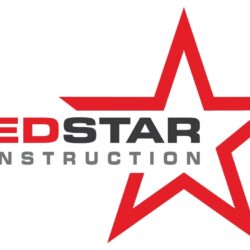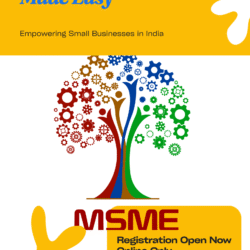When it comes to creating a productive, professional, and stylish workspace, office meeting tables play a central role. Whether it’s brainstorming new ideas, collaborating on projects, or hosting client meetings, the right meeting table helps set the tone for your workspace. For enterprises looking to make smart furniture investments, selecting the right meeting table isn’t just about looks it’s about functionality, comfort, and long-term value.
In this guide, we’ll walk you through everything you need to know about choosing the perfect office meeting table from selecting the ideal size and material to choosing a style that complements your company’s identity. We’ll also touch on how your table choice connects with other essential furniture pieces like the corner office desk, helping you create a cohesive office layout.
Understanding the Importance of the Right Office Meeting Table
Your office meeting tables are more than just furniture they are the centerpiece of collaboration. A thoughtfully chosen meeting table reflects your brand’s professionalism, encourages creativity, and enhances communication among your team. For enterprises, a well-designed meeting space can even influence decision-making and productivity levels.
Before diving into materials, shapes, or styles, start by asking a few key questions:
-
How many people typically attend your meetings?
-
What kind of meetings do you hold formal presentations or casual discussions?
-
How much floor space do you have available?
By understanding your needs, you can narrow down your options and choose a table that fits both your physical space and organizational culture.
Step 1: Choose the Right Size
Size is the foundation of your decision. A meeting table that’s too small can feel cramped, while one that’s too large can make the room feel unbalanced. Ideally, there should be at least 3 feet of space between the edge of the table and the nearest wall or furniture to ensure smooth movement.
For a standard enterprise setting:
-
Small meeting rooms: A 4–6 seater office meeting table is ideal.
-
Medium-sized rooms: Choose an 8–10 seater table for balanced comfort and capacity.
-
Large conference rooms: Go for a 12–20 seater table that commands attention and accommodates big groups.
If your workspace includes executive offices or private work zones, pair your meeting space with a corner office desk to maintain a seamless look while maximizing productivity. The corner desk can serve as a compact workspace that complements your larger meeting setup.
Step 2: Selecting the Perfect Material
The material you choose impacts not only the look of your office meeting table but also its durability, maintenance, and cost. Enterprises should consider both function and aesthetic when selecting materials.
1. Wood:
Classic, timeless, and professional. Solid wood tables convey authority and sophistication, perfect for executive and boardroom settings.
2. Laminate:
A budget-friendly option that’s easy to maintain and comes in multiple finishes. Ideal for busy meeting rooms or collaborative spaces.
3. Glass:
Adds a touch of modern elegance. Glass-top tables create a sleek, open feel, making smaller rooms appear more spacious.
4. Metal:
Durable and contemporary, metal-framed office meeting tables are great for industrial-style offices or modern work environments.
To create visual harmony, match the material of your meeting table with the furniture pieces around it such as chairs, cabinets, and even your corner office desk. This ensures a professional and cohesive workspace.
Step 3: Consider Shape and Layout
The shape of your office meeting table plays a big role in defining the flow and energy of the room. Each shape serves a unique purpose and suits different meeting styles.
Rectangular Tables:
The most traditional and versatile option. These tables fit larger rooms and promote a structured meeting style.
Round Tables:
Encourage equality and collaboration no “head of the table.” Perfect for team discussions or creative sessions.
Boat-Shaped Tables:
Offer a modern twist on the rectangular style with slightly curved sides, providing better visibility for everyone at the table.
Square Tables:
Work best for small meeting rooms or intimate settings where close communication is key.
Modular Tables:
For enterprises that value flexibility, modular office meeting tables can be rearranged into different shapes depending on the occasion training, conference, or group work.
If you use a corner office desk in the same room, ensure that the table shape complements your office layout rather than overwhelming it.
Step 4: Prioritize Comfort and Ergonomics
A comfortable meeting table setup boosts focus and engagement. Make sure your office meeting tables offer ample legroom, and pair them with ergonomic chairs that provide proper back support.
Also, consider the height of your table. The standard height is around 29–30 inches, but for collaborative spaces, adjustable or standing-height tables can add a dynamic touch. Pairing such tables with a corner office desk nearby can help transition between focused solo work and group meetings smoothly.
Step 5: Match Style with Brand Identity
Your meeting table says a lot about your company culture. A minimalist glass table can portray innovation and modernity, while a traditional wooden table reflects stability and heritage. Choose a style that represents your enterprise’s values.
Some enterprises prefer custom-made office meeting tables with integrated cable management, power outlets, and multimedia connectivity features that align with today’s tech-driven workplaces.
For a cohesive aesthetic, complement your meeting table with other furniture elements like corner office desks, storage cabinets, and ergonomic chairs in matching finishes.
Step 6: Think About Functionality and Accessories
Modern meeting spaces are more than just places to sit they’re interactive environments. When buying office meeting tables, look for functional features such as:
-
Built-in cable ports and power modules
-
Integrated storage or drawers
-
Expandable or foldable designs for flexibility
Enterprises can also consider combining their office meeting table setup with adjacent furniture such as corner office desks for additional workspace or note-taking areas during discussions.
Step 7: Budget Wisely
Enterprises often need to balance design aspirations with budget limitations. Set a clear budget range before you shop. While high-end tables offer premium finishes and long-lasting quality, mid-range options like laminate or metal provide great value without compromising on durability.
Remember, investing in the right office meeting tables pays off in the long run by enhancing your team’s productivity and leaving a lasting impression on clients.
Step 8: Maintenance and Care
No matter what material you choose, proper care will ensure your office meeting table maintains its professional look. Wipe down wooden or laminate surfaces with a mild cleaner, avoid sharp objects that could cause scratches, and use coasters for drinks.
For enterprises using corner office desks in adjacent spaces, apply similar care practices to maintain a consistent, polished appearance across all furniture.
Final Thoughts
Choosing the perfect office meeting table is about finding the balance between aesthetics, comfort, and practicality. From determining the right size to selecting the ideal material and shape, each decision should align with your enterprise’s goals and workspace needs.
When you pair your office meeting tables with complementary pieces like the corner office desk, you create a cohesive environment that inspires creativity and collaboration.




